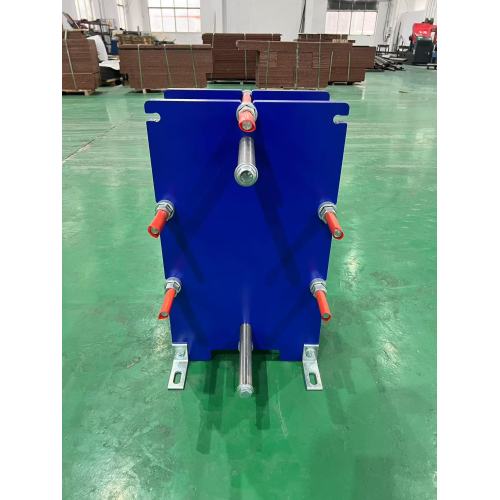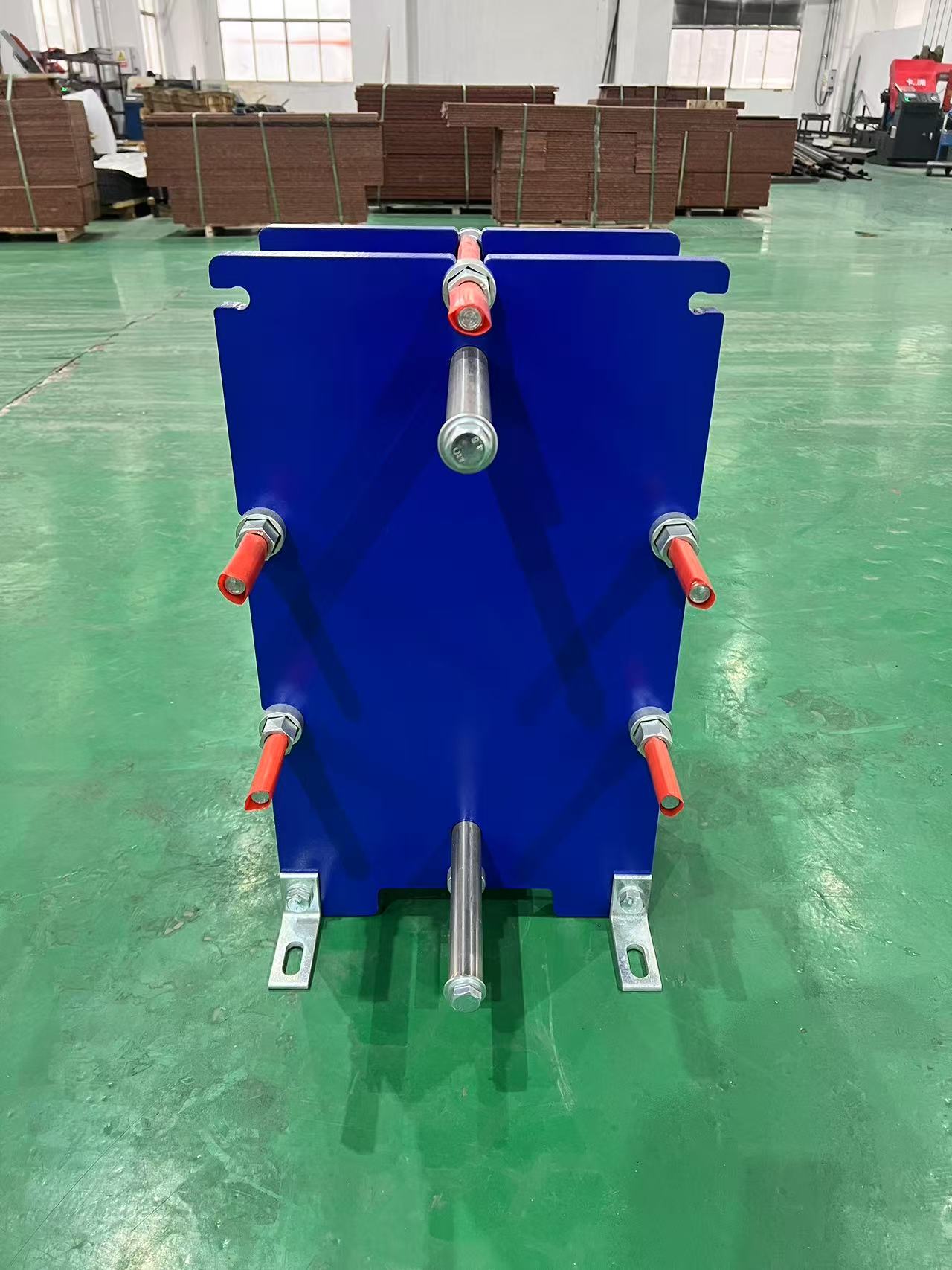The MS60-20D-EPDM-304 model produced by our company is a
Detachable Plate Heat Exchanger, the main parameters are 920mm height, 320mm width, the height between the aperture is 640mm, the width between the aperture is 140mm, and the thickness is (2+X)*N, N is the number of plates X is the thickness of a single plate. The maximum connection size is 2 inches! ? High energy efficiency, low operating costs, flexible configuration – modifiable heat exchange area, easy installation, compact design, high maintainability – easy to open for inspection and cleaning, easy to clean. Every detail has been carefully designed to ensure optimal performance, maximum uptime, and ease of maintenance. Choose the available features based on the configuration, suitable for many types of applications, and choose from a variety of plate and gasket types.
The detachable
Plate Heat Exchanger is made of many stamped corrugated sheets at certain intervals, sealed by gaskets around the perimeter, and overlapped and pressed by the frame and the compression spiral, the four corner holes of the plate and the gasket form the distribution pipe and the collection tube of the fluid, and at the same time, the cold and hot fluids are reasonably separated, so that they flow in the flow channel on both sides of each plate respectively, and the heat exchange is carried out through the plates.
How it works
A plate
Heat Exchanger consists of a set of metal plates with four corner holes for both hot and cold media to pass through. During assembly, plate A and plate B are arranged alternately, a network channel is formed between the plates, and the sealing gasket seals the cold and hot medium in the heat exchanger, and at the same time, the cold and hot medium are reasonably separated without mixing. The hot and cold fluids flow at intervals in the channel, which can be reversed or downstream as needed, and the hot and cold fluids are exchanged through the plate wall during the flow process, so as to achieve the desired effect.
Design features:
1. High efficiency and energy saving: its heat exchange coefficient is 3000~4500kcal/m2·°C·h, which is 3~5 times higher than the thermal efficiency of
Shell And Tube Heat Exchanger.
2. Compact structure: the plates of the plate heat exchanger are closely arranged, compared with other types of
Heat Exchangers, the floor area and space occupied by the plate heat exchanger are less, and the plate heat exchanger with the same area for heat exchange is only 1/5 of the shell and
Tube Heat Exchanger.
3. Easy to clean and easy to disassemble and assemble: the plate heat exchanger clamps the clamping plate by the clamping bolt, so it is easy to disassemble and assemble, and can be opened and cleaned at any time.
4. Long service life: the plate heat exchanger is pressed with stainless steel or titanium alloy plates, which can withstand various corrosive media, and the rubber pad can be replaced at will, and can be easily disassembled, assembled and repaired.
5. Strong adaptability: the plate heat exchanger plate is an independent element, which can be added or decreased at will according to the requirements, and the form is diverse; It can be adapted to a variety of different process requirements.
6. No liquid stringing, the sealing tank of the plate heat exchanger is set up with a leakage channel, and all kinds of media will not collude, even if there is leakage, the medium is always discharged outward.
apply
Plate Heat Exchangers have been widely used in metallurgy, mining, petroleum, chemical industry, electric power, medicine, food, chemical fiber, papermaking, textile, shipbuilding, heating and other departments, and can be used for heating, cooling, evaporation, condensation, sterilization and disinfection, waste heat recovery and other situations.






